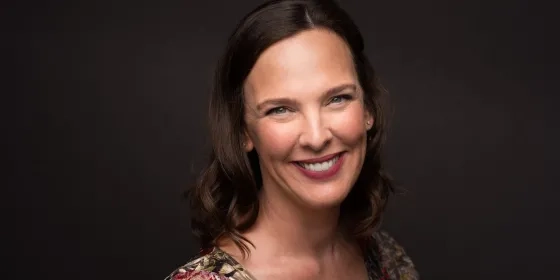SFCM Baroque Orchestra Brings Back the Classics With a New Twist
Ahead of a special showing by the SFCM Baroque Orchestra, the SFCM Newsroom sits down with Baroque Cellist and Co-Director Elisabeth Reed to find out her inspiration, her advice for music students, and what makes this performance a unique and iconic combination of historical arts.
By Mark Taylor
On October 31st, the SFCM Baroque Orchestra will present a historical performance unlike any other. Viola da gamba and Baroque cello instructor Elisabeth Reed helped direct the show that brings together a variety of classics, and a few firsts. Ahead of the production, Reed shared some wisdom, and what audience members can expect.
How did you get started in music?
My mother was a pianist and a choir singer and she started me with piano, choir, dance, and Eurythmics when I was a young child. She also loved to go to concerts and she always took me along with her. When I was 8-years-old and we were living in England for a year, she took me to a solo cello concert in a small, stone church with great acoustics. I heard the sound of the cello there and that was it for me - we rented one the next month and I started taking lessons. I grew up in North Carolina and we were very lucky to have a public performing arts high school there - the NC School of the Arts. I went to boarding school there from 9th -12th grade and it was a very inspiring place to be - surrounded by teenagers who all really cared about the arts.
What music inspires you?
I really love Renaissance and Baroque music of course. I love Renaissance consort music for viols and also French Baroque music for solo viol like the music of Marin Marais. I have loved the Bach cantatas and the Passions since I was a child.
When teaching, what do you hope to pass onto your students?
I hope to help them learn to pay a really high quality of attention to themselves, to the music and to the other musicians with whom they are playing. I hope they can learn to refine and trust their own perceptions and to develop a lively sense of interest and curiosity.
How do you prepare for performances?
I practice and rehearse, of course. I swim and do Feldenkrais and try to keep my body and my nervous system relaxed and in good shape.
You're co-directing the SFCM Baroque Orchestra on October 31st, what goes into taking on such an undertaking?
I co-direct the Baroque orchestra with Corey Jamason. We have known each other for almost 30 years, since graduate school and we have worked together at SFCM for 14 years. To prepare, we hold sectionals in the Baroque violin and Baroque cello classes. These are the classes in which the students learn to play the Baroque instruments, which are significantly different from their modern counterparts. The strings, the bows, and the whole set-up of the instruments are different and require specific technical skills. Then we have several weeks of orchestra rehearsal. The Baroque orchestra functions as a large chamber group. For most of our concerts, there is no conductor and we spend a lot of time unifying our interpretations and learning to phrase and articulate the music together.
What can we expect from this performance?
This is an exciting concert. We have an interesting variety of music: Purcell, Bach, Corelli, Vivaldi and Destouches. We have some great student soloists in the Vivaldi four violin concerto, the Corelli Concerto Grosso, and the Bach aria and we also have a wonderful Baroque dancer, Jennifer Meller, and a Baroque oboe player, Marc Schachman, as our special guests.
Tell us more about the Baroque dancer, is this a first? How did this collaboration come to be?
We had Jennifer Meller join us for the first time last year. She danced a beautiful Chaconne from Lully's Armide accompanied by the Baroque orchestra and she also taught a Baroque dance workshop. We enjoyed working with her so much and it was a great experience for the students to play for a Baroque dancer. So much of Baroque music is based on Baroque dance and Baroque dance forms. It is an invaluable experience, for anyone interested in historical performance, to get to see live Baroque dance. We are delighted that she will be joining the SFCM faculty this year and teaching a class on Baroque dance at the school.
What do you hope listeners glean from this particular concert?
This is music by some of the best and most well-known Baroque composers. For some of the students in the orchestra, this is their first concert playing on actual period instruments and we wanted them to start off playing a selection of music by these important composers. We also know that the audience will enjoy all the different moods, colors, and textures which are expressed in this glorious music.
Reserve tickets for the October 31st SFCM Baroque Orchestra concert.
Please note that this concert will be held in person at the Caroline H. Hume Concert Hall. A live stream will also be available for viewers unable to attend in person.
